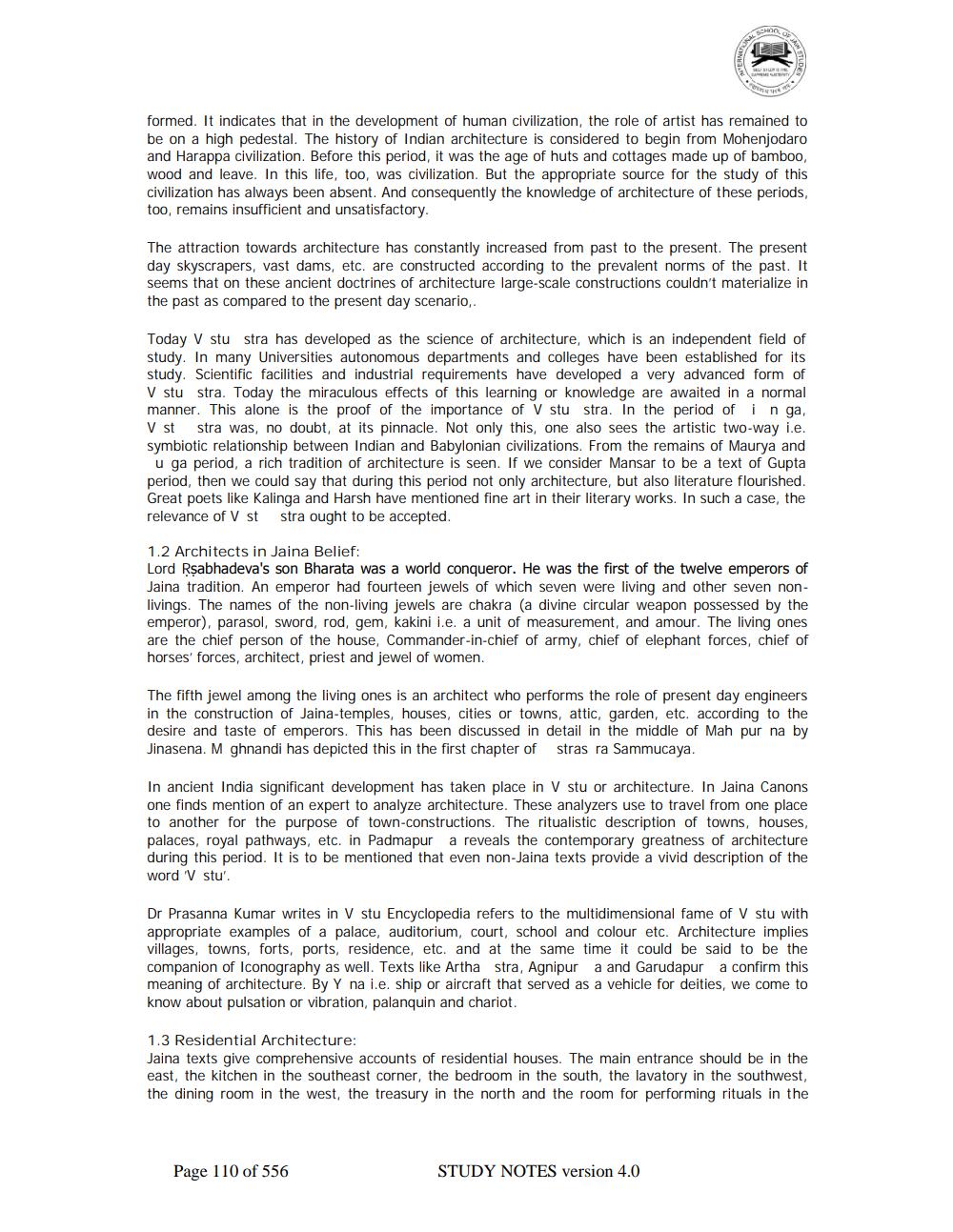________________
formed. It indicates that in the development of human civilization, the role of artist has remained to be on a high pedestal. The history of Indian architecture is considered to begin from Mohenjodaro and Harappa civilization. Before this period, it was the age of huts and cottages made up of bamboo, wood and leave. In this life, too, was civilization. But the appropriate source for the study of this civilization has always been absent. And consequently the knowledge of architecture of these periods, too, remains insufficient and unsatisfactory.
The attraction towards architecture has constantly increased from past to the present. The present day skyscrapers, vast dams, etc. are constructed according to the prevalent norms of the past. It seems that on these ancient doctrines of architecture large-scale constructions couldn't materialize in the past as compared to the present day scenario,
Today V stu stra has developed as the science of architecture, which is an independent field of study. In many Universities autonomous departments and colleges have been established for its study. Scientific facilities and industrial requirements have developed a very advanced form of V stu stra. Today the miraculous effects of this learning or knowledge are awaited in a normal manner. This alone is the proof of the importance of V stu stra. In the period of in ga, V st stra was, no doubt, at its pinnacle. Not only this, one also sees the artistic two-way i.e. symbiotic relationship between Indian and Babylonian civilizations. From the remains of Maurya and
u ga period, a rich tradition of architecture is seen. If we consider Mansar to be a text of Gupta period, then we could say that during this period not only architecture, but also literature flourished. Great poets like Kalinga and Harsh have mentioned fine art in their literary works. In such a case, the relevance of V st stra ought to be accepted.
1.2 Architects in Jaina Belief: Lord Rsabhadeva's son Bharata was a world conqueror. He was the first of the twelve emperors of Jaina tradition. An emperor had fourteen jewels of which seven were living and other seven nonlivings. The names of the non-living jewels are chakra (a divine circular weapon possessed by the emperor), parasol, sword, rod, gem, kakini i.e. a unit of measurement, and amour. The living ones are the chief person of the house, Commander-in-chief of army, chief of elephant forces, chief of horses' forces, architect, priest and jewel of women.
The fifth jewel among the living ones is an architect who performs the role of present day engineers in the construction of Jaina-temples, houses, cities or towns, attic, garden, etc. according to the desire and taste of emperors. This has been discussed in detail in the middle of Mah pur na by Jinasena. M ghnandi has depicted this in the first chapter of stras ra Sammucaya.
In ancient India significant development has taken place in V stu or architecture. In Jaina Canons one finds mention of an expert to analyze architecture. These analyzers use to travel from one place to another for the purpose of town-constructions. The ritualistic description of towns, houses, palaces, royal pathways, etc. in Padmapur a reveals the contemporary greatness of architecture during this period. It is to be mentioned that even non-Jaina texts provide a vivid description of the word 'V stu'.
Dr Prasanna Kumar writes in V stu Encyclopedia refers to the multidimensional fame of V stu with appropriate examples of a palace, auditorium, court, school and colour etc. Architecture implies villages, towns, forts, ports, residence, etc. and at the same time it could be said to be the companion of Iconography as well. Texts like Artha stra, Agnipur a and Garudapur a confirm this meaning of architecture. By Y na i.e. ship or aircraft that served as a vehicle for deities, we come to know about pulsation or vibration, palanquin and chariot.
1.3 Residential Architecture: Jaina texts give comprehensive accounts of residential houses. The main entrance should be in the east, the kitchen in the southeast corner, the bedroom in the south, the lavatory in the southwest, the dining room in the west, the treasury in the north and the room for performing rituals in the
Page 110 of 556
STUDY NOTES version 4.0




